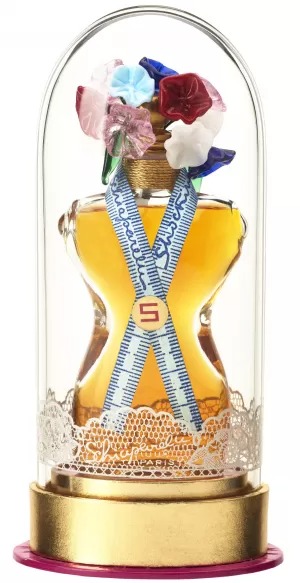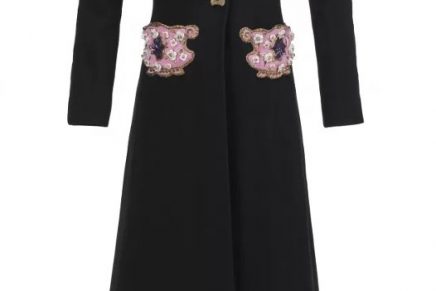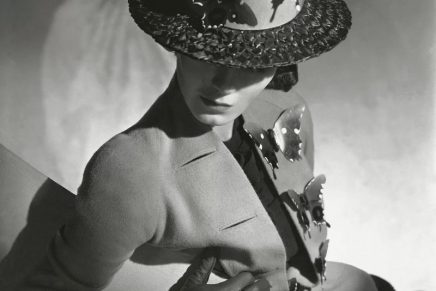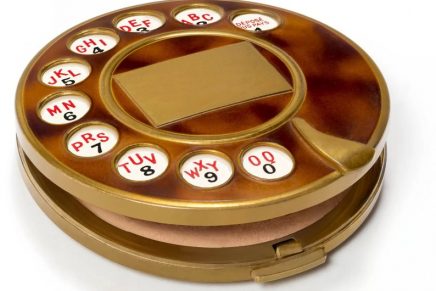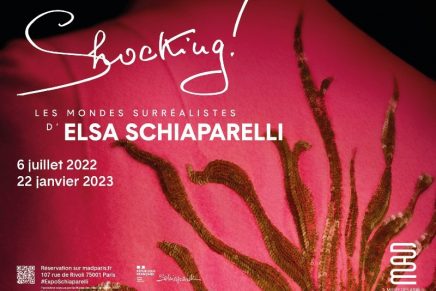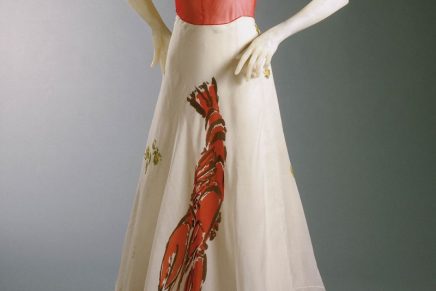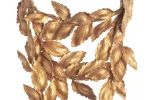Musée des Arts Décoratifs in Paris revisits the Elsa Schiaparelli’s extraordinary work.
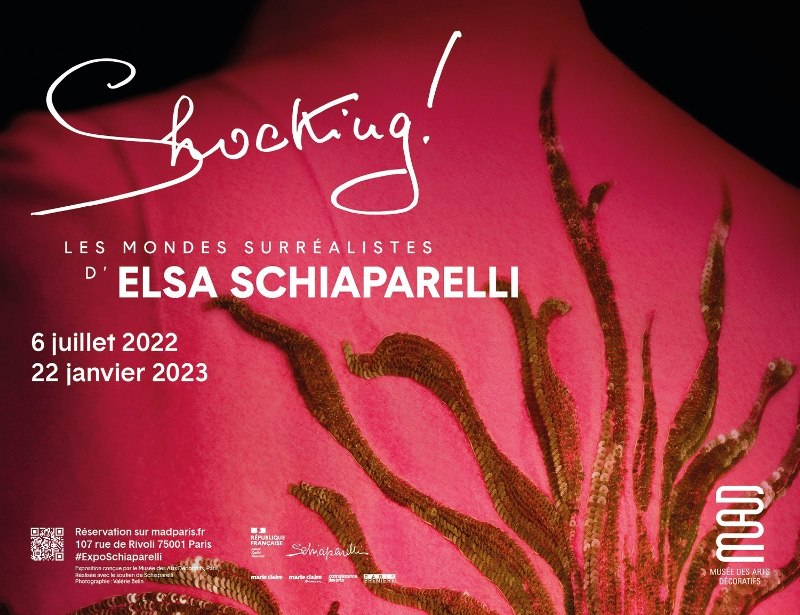
1. Elsa Schiaparelli — Details of the “Phoebus”; Cloak Winter 1937-1938; Wool, silk and embroidery Musée des Arts décoratifs © Valérie Belin ; “Shocking! The surreal world of Elsa Schiaparelli” exhibition at Musée des Arts Décoratifs in Paris; @madparis.fr
From July 6th, 2022, to January 22nd, 2023, the Musée des Arts Décoratifs in Paris celebrates the bold and exciting creations of Italian couturière Elsa Schiaparelli (b. September 10th, 1890, Rome – d. November 13th, 1973, Paris), who drew much of her inspiration from her close ties to the Parisian avant-garde of the 1920s and 1930s. Nearly 20 years since the last retrospective devoted to Schiaparelli at the Musée des Arts Décoratifs, the time has come to revisit this extraordinary designer’s work, her innovative sense of feminine style, her sophisticated, often eccentric designs, and the thrill that she brought to the world of fashion.
“Shocking! The surreal world of Elsa Schiaparelli” exhibition brings together 520 works including 272 silhouettes and accessories by Schiaparelli herself, displayed alongside iconic paintings, sculptures, jewelry, perfumes, ceramics, posters, and photographs by the likes of Schiaparelli’s dear friends and contemporaries: Man Ray, Salvador Dalí, Jean Cocteau, Meret Oppenheim and Elsa Triolet. The retrospective, a highlight of the 2022/2023 Exhibition Calendar, will also showcase creations designed in honor of Schiaparelli by fashion icons including Yves Saint Laurent, Azzedine Alaïa, John Galliano and Christian Lacroix. Daniel Roseberry, artistic director of the House of Schiaparelli since 2019, also boldly interprets the heritage of Elsa Schiaparelli with a design of his own. The poetic and immersive scenography of Shocking! The surreal world of Elsa Schiaparelli has been entrusted to Nathalie Crinière. The exhibition will be presented in the Christine & Stephen A. Schwarzman fashion galleries of the Musée des Arts Décoratifs.
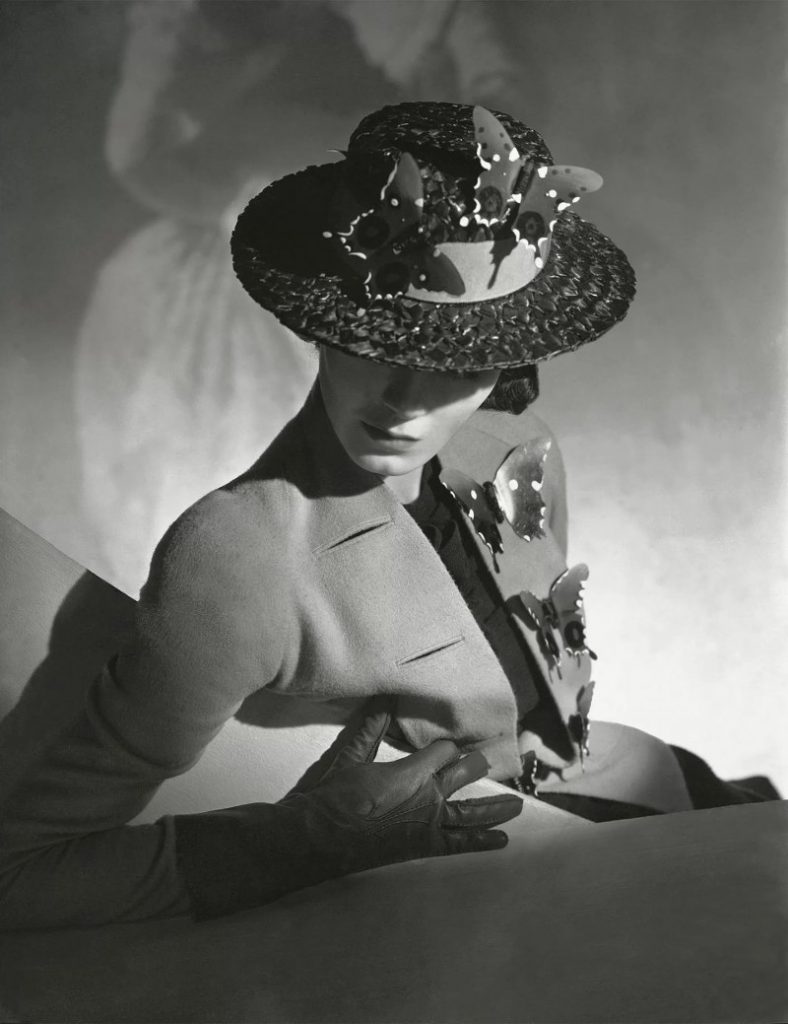
“Shocking! The surreal world of Elsa Schiaparelli” exhibition at Musée des Arts Décoratifs in Paris; @madparis.fr
In contemporary times, the creative dialogue that exists between fashion and art has become a matter of fact,and very few have done more to shape this conversation than Elsa Schiaparelli, an “inspired” seamstress as she often referred to herself. Raised in a humanist and erudite environment, Elsa Schiaparelli embraced fashion through her deep fascination with art and artists. She became a creator of image, playing with haute couture designs, fashioning evening dresses, styling street clothes, dressing sports models, crafting accessories and mixing perfumes. Avoiding the dullness of “society,” Schiaparelli was free to explore her inspirations, particularly through her friendships with artists, many of whom considered Schiaparelli to be a full-fledged artist in her own right.
Displayed on two levels, the exhibition is organized both thematically and chronologically around key moments in the career of Elsa Schiaparelli, linking her most remarkable collections from year to year with the works of friends and contemporaries who inspired her fashion designs. These works are placed throughout the exhibition, punctuating important stages in Schiaparelli’s life and the evolution of her design. The introductory room, a vast and immersive space, is dedicated to the drawings of the couturière which number in their hundreds, conveying the extent of her work. The awakening of the artist in fashion and modernity is explored alongside the defining role that designer Paul Poiret played as a mentor in Schiaparelli’s life beginning in 1922.
Elsa Schiaparelli went on to design her trompe l’œil patterned sweaters, an idea as brilliant as it is radical, which awakened in her a taste for Art Deco, particularly after her contact with Jean Dunand, who designed for Schiaparelli a refined dress with lacquer painted pleats. Schiaparelli then inaugurates a series of collaborations with a variety of artists including Ela Triolet, Jean Cocteau and Salvador Dalí.
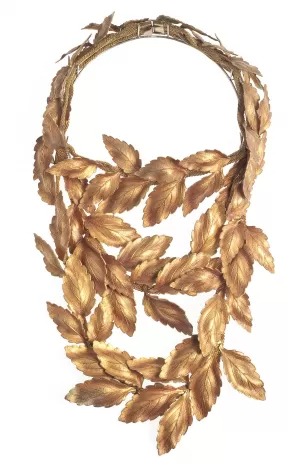
3. Jean Clément — Necklace 1938, Golden metal mounted on fabric; Musée des Arts décoratifs; © Les Arts Décoratifs / Jean Tholance; © Adagp, Paris, 2022
She develops her acute sense of detail through models largely inspired by the Surrealist aesthetic, introducing marvelous patterns and materials in transparent plastics, crawfish shaped buttons, “drawer pockets,” and lobsters. She inspires Man Ray and becomes his model as seen through the many photographs that testify to this fruitful relationship.
The exhibition continues with thematic collections that Elsa Schiaparelli initiates alone around sources of inspiration that are dear to her – Italian antiquity, nature and music.
The Pagan Collection gives a nod to Antiquity with references to Ovid’s metamorphoses while the Butterfly Collection is an ode to insects (a source of inspiration she shares with Surrealist artists) and the Music Collection from 1939 seems to infinitely stretch and extend the silhouette of the modern woman. The mythical collaboration formed between Elsa Schiaparelli and Salvador Dalí, enhanced by a taste for scandal and artistic provocation, is highlighted in a room dedicated to Dalí, showcasing his iconic “Lobster Dress” or the famous “Hat Shoe,” a sort of Surrealist fascinator.
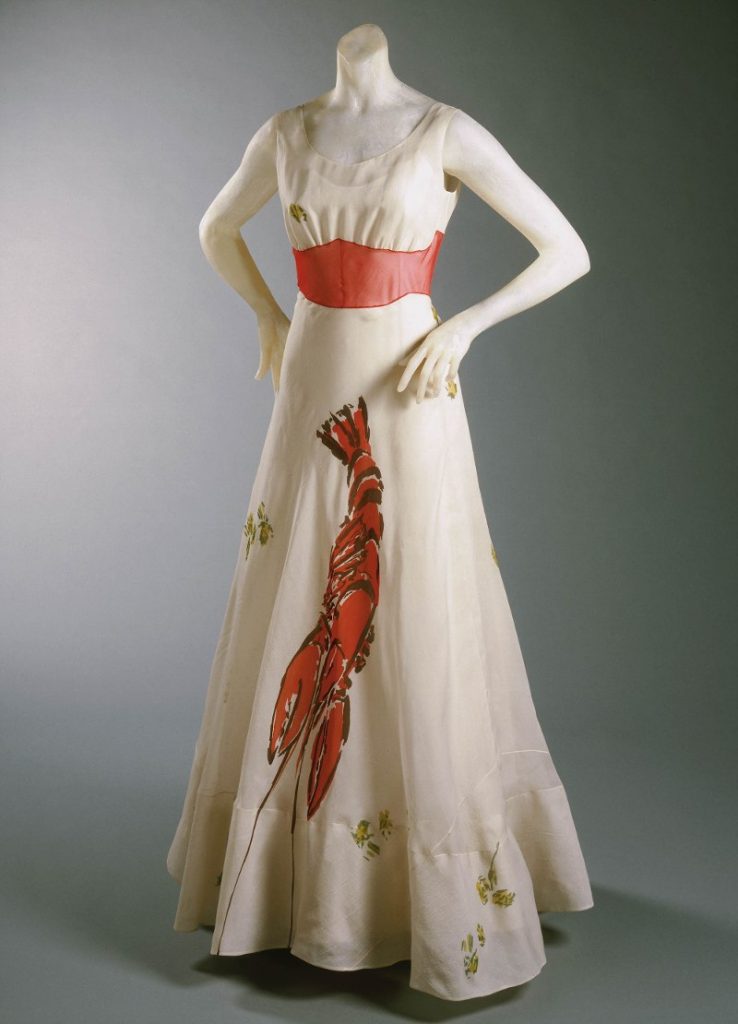
@Elsa Schiaparelli in collaboration with Salvador Dalí — Evening gown 1937, Silk; © Philadelphia Museum of Art
The second floor opens onto the reconstruction of Elsa Schiaparelli’s couture salons, then located at 21 Place Vendôme in Paris, which she inaugurated in 1935. For interior design and decorations, Schiaparelli calls upon Jean-Michel Frank for his sleek, ultra-chic and elegant lines. There, she dresses the planet’s most extravagant ladies and quickly acquires an international reputation.
The perfume cage delicately showcases her original olfactory creations, including the legendary “Shocking” which becomes a worldwide success, demonstrating the incredible marketing sense of its creator. Emphasis is also placed on the intricate and luxurious art of embroidery and Schiaparelli’s taste for the works of Maison Lesage, founded in 1924, who created bespoke embroideries for her and other important fashion houses and continues to do so. The collections from 1938 to 1939 summon the imagination with the likes of the “commedia dell’arte,” inspired by the characters of the colorful 18th century Italian comedy, the Astrological Collection, which blends Baroque references linked to Versailles with the Sun King celebrating the 17th century, and lastly, the Circus Collection with its sumptuous boleros embroidered with horses, acrobats, and elephants. Pre-war designs show a rather narrow cigarette-like silhouette while post-war designs are looser and moreconstructed.
The journey ends with the contemporary silhouette created by Daniel Roseberry with a spectacular finale that translates the Surrealist inspiration of the fashion houses eminent founder with sensitivity and strength.
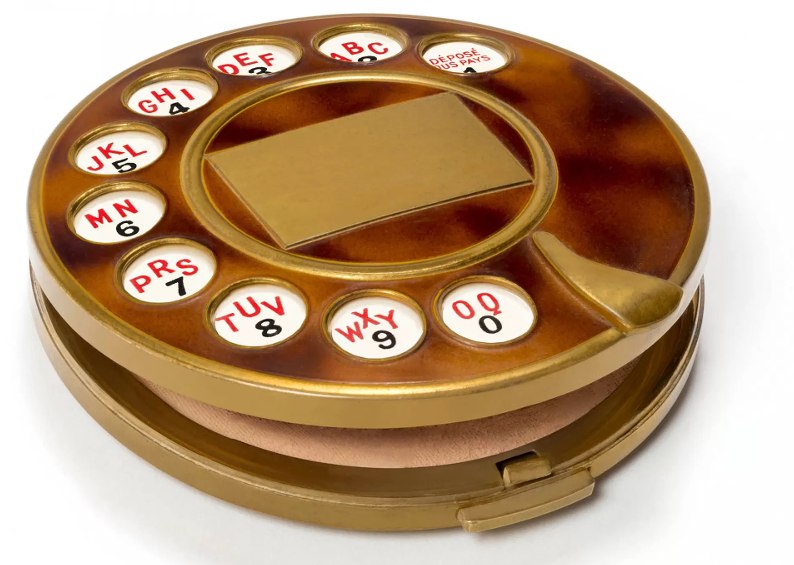
Salvador Dalí — Telephone powder compact 1935, Resin and metal; © Schiaparelli Archives; / © Salvador Dalí, Fundació Gala-Salvador Dalí / Adagp, Paris; “Shocking! The surreal world of Elsa Schiaparelli” exhibition at Musée des Arts Décoratifs in Paris; @madparis.fr
In just twenty-five years, Elsa Schiaparelli turned fashion into a natural element of the avant-garde; a playground in which she recreated the interaction between women and femininity, allure and spirit, while remaining strikingly relevant today. She embodied a vision of a bright and vibrant Paris, curious about everything, enjoying each novelty that came her way. It is this freedom that Shocking! The surreal world of Elsa Schiaparelli offers to the visitor – freedom to create, freedom to converse, freedom to be oneself – through models, jewelry, and thousands of drawings, all of which were donated by Elsa Schiaparelli to l’Union Française des Arts du Costume in 1973, whose holdings are now preserved by the Musée des Arts Décoratifs.
As a final modern gesture, the Musée des Arts Décoratifs continues to preserve the timeless works of Elsa Schiaparelli and thus, allows her art and design to live on.
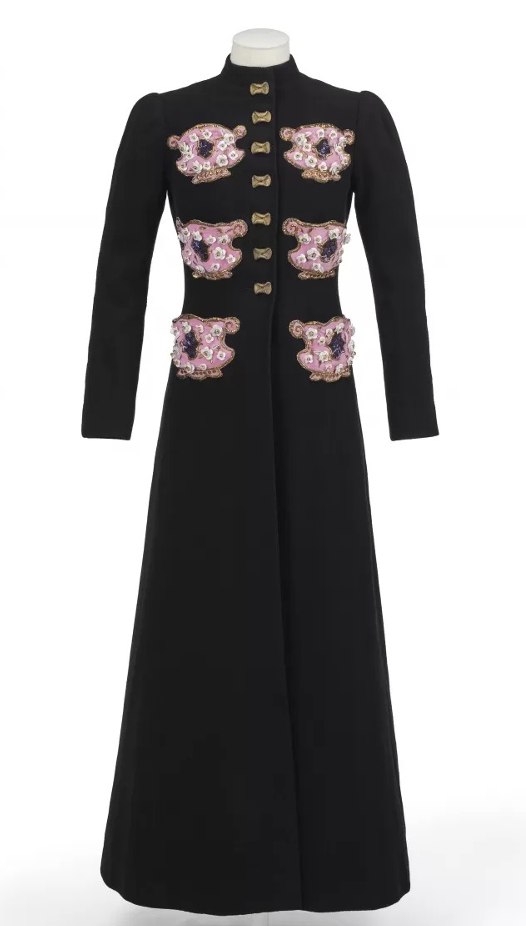
@Elsa Schiaparelli — Evening coat Winter 1938-1939; Wool, silk and china ; Musée des Arts décoratifs; © Les Arts Décoratifs / Christophe Dellière

